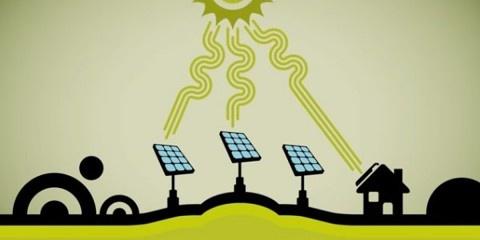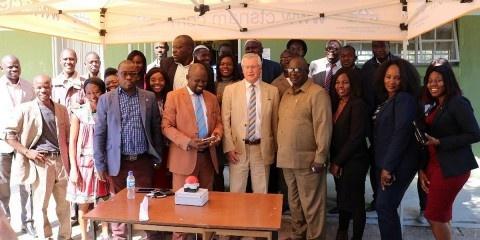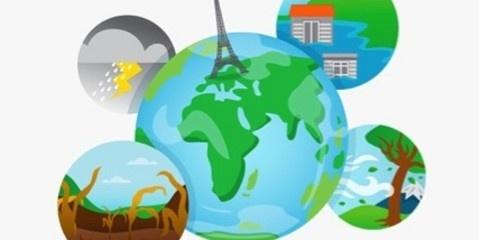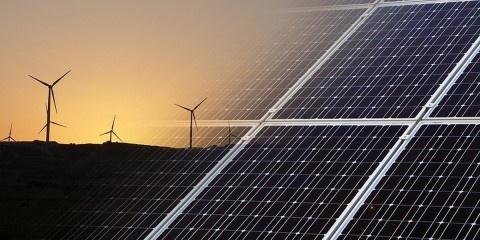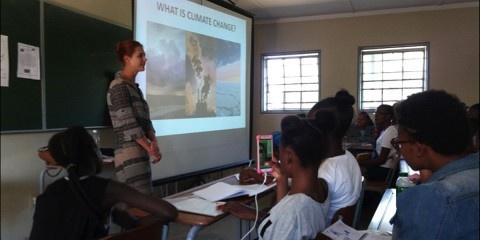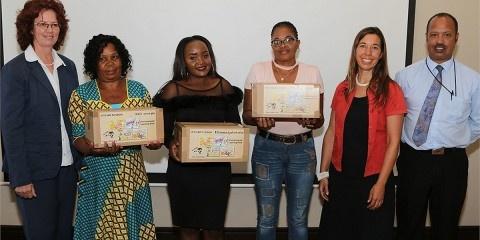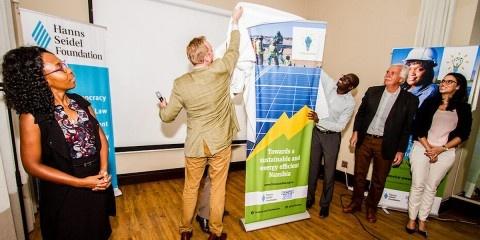There has been a recent rise in energy costs and according to the Electricity Control Board a tariff increase of 5%, translating to an effective bulk tariff increase from N$1,61 per kilowatt-hour to N$1,69 per kilowatt-hour for the financial year 2018/19. On that same note, petrol and diesel prices has increased to an effective 60 cents per litre in June. The new pump...
Ohangwena Region, 19 June 2018: While there are still 71 schools unelectrified in the Ohangwena region, pupils and teachers of the Omuuni and the Ondjabayonghalu Combined Schools have good reason to smile after having been equipped with a 3kW Solar PV Systems. Through the Promoting Renewable Energy in Namibia (PREN) Project of the Hanns Seidel Foundation (HSF) Namibia two systems were...
Climate change is a global challenge that does not respect national borders. It is an issue that requires solutions that need to be coordinated at the international level and it requires international cooperation to help developing countries move toward a low-carbon economy. To address climate change, countries adopted the Paris agreement at the COP21 in Paris on 12 December 2015 and...
Over the next 30 years Namibia’s population is set to almost double, and like the rest of the world, more and more people will be living in urban areas or cities (worldpopulationreview.com). This means that more people will be using electricity and the demand for energy will increase dramatically. In 2017, an incredible 50% of the population did not have access...
The Promoting Renewable Energies in Namibia (PREN) Project participated in a two-day workshop hosted by the Namibian Women Association’s (NAWA) Children’s Movement on the 28th & 29th April 2018 at Jakob Marengo Secondary School in Windhoek. Under the theme ‘We shall change the world’, the workshop was attended by learners from local schools in Windhoek as well as from other parts of the...
Environmental Sustainability Champion Of The Month (August) We profile an individual or organisation every month making great strides for environmental protection, climate change adaptation and mitigation or sustainable development in Namibia. Environmental Sustainability Champion For August 2017: Ester Hango Ester Hango is an Environmental Educator at the Ministry of Sport, Youth and National Services. She has a passion for the environment and is committed...
It is in early childhood that children often experience the greatest environmental challenges, and this is time the foundations of many of their fundamental attitudes and values are first put into place. Also, through research and experience, we know that even very young children are capable of sophisticated thinking in relation to socioenvironmental issues. Therefore, the earlier Education for Sustainable Development...
Sustainable development is everyone’s business. And as Namibia tackles a variety of environmental, social and economic challenges; it also has many opportunities to transform its economy into one powered by sustainable energy, efficient resource use, decent jobs and quality education. Public awareness, information sharing and capacity development are vital in order to continually make these opportunities for sustainable development a reality in Namibia. The first phase...
The Hanns Seidel Foundation (HSF) Namibia in collaboration with the Desert Research Foundation of Namibia (DRFN), main partners and broader stakeholders officially launched the Promoting Renewable Energies in Namibia project, on the 28th of September 2017 at NICE Restaurant in Windhoek. The event was aimed at introducing the PREN Project and outlining its objectives to various stakeholders. Moderated by Abraham Hangula from the Namibia Energy Institute...
Carbon dioxide (CO2) is one of the many greenhouse gases that in increased amounts contribute to global warming and climate change that we are currently faced with in Namibia and the world at large. Soils and plants store a lot of carbon, nearly twice the amount found in the atmosphere. This stored carbon in the soil acts as the basis of...
